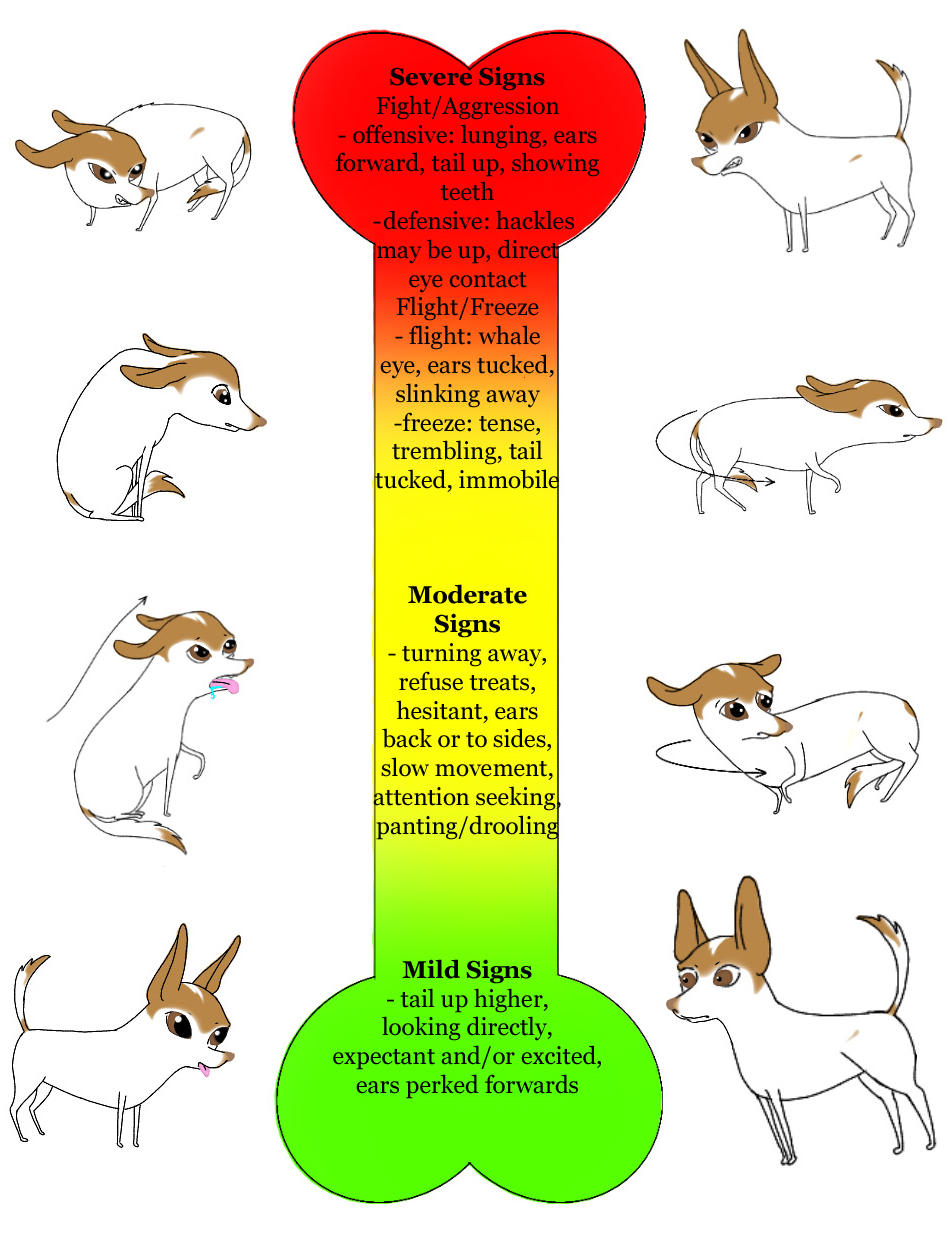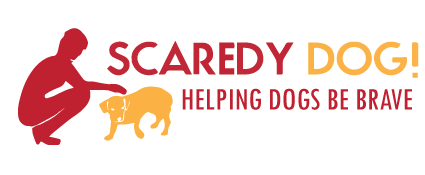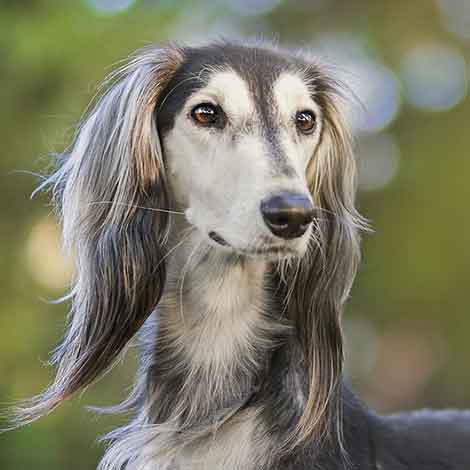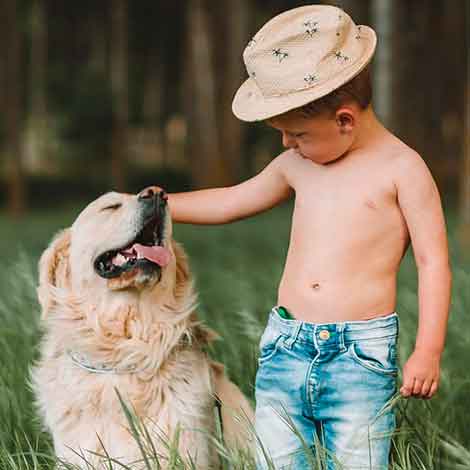Taking Your Scaredy Dog To The Groomer

Grooming salons are one of the biggest problems for dogs with fear-based behavior problems. They are subjected to unpleasant practices without their consent and if they struggle, they are restrained. It’s no wonder each time they go to the groomer, their fear worsens!
A lot of this guide depends on where your dog gets nervous (see chart on the FAS scale for detailed information). Start with FAS signs of 0-1 or 1 until your dog is calm with the first step before progressing. This may mean opening the car door, giving your dog a handful of high-value treats, closing the door, and going back in the house. If that’s when your dog starts getting nervous, that’s ok! Your dog sets the pace for any training you do. If you are unsure of anything in this guide, have trouble recognizing your dog’s signs of stress, or your dog fear-bites or lashes out, make sure to consult with a professional trainer or behaviorist.

Grooming
You won’t be present for the majority of the grooming appointment, but there are ways you can make the job easier for both your dog and the groomer. You can get your dog used to various practices he’ll have done at the groomers, such as baths and nail trims. Using high-value treats throughout this process makes your dog associate these practices with good food.
- Have your dog hop into the bathtub (don’t put or force him into the tub), give him lots of high value treats, and have him hop back out
- Repeat having your dog hop into the bathtub, turn the water on, give him treats, turn the water off, and have him hop out
- Again, have your dog hop into the bathtub, turn the water on, get his feet a little bit we, give him treats, turn the water off, and have him hop out
Using this slow process, you can work your way up his body. Keep building slowly until your dog can remain calm through the whole bathing process, knowing he’ll get lots of treats and praise throughout. Remember to stop if you see any signs of stress or anxiety, and repeat each step several times for several days until your dog can remain calm before moving on to the next step.
You can use this same process with nail trims
- Get the clippers or dremel out, let him sniff it, give him treats, and then put it away.
- Next try getting the supplies out, pick up his paw and hold the clippers close, give him treats, let his paw go, and put the clippers away.
- And finally, get the supplies out, pick up his paw, clip one nail, give him lots of treats, and let his paw go. Then clip the next nail, give him lots of treats, and repeat the process until he will let you clip his nails calmly.
A Scaredy Dog’s nemesis – the hairdryer
The hairdryer is one of the scariest things about going to the salon. Many dogs don’t like the weird feeling of having their fur blow dried, and even more dogs don’t like the noise of the blow dryer. Luckily you can use the same process to desensitize your dog to the noise and feel of the blow dryer.
- Show him the blow dryer, let him sniff it, give him treats, and put it away.
- Get the blow dryer out, turn the blow dryer on, give him lots of treats, and turn it back off.
- Then get the blow dryer out, turn the blow dryer on, move it so it blows briefly on his feet, give him lots of treats, and turn it back off.
Many groomers rush to get through the grooming and don’t use training cues, but here are a few tricks you can teach your dog in advance to help him remain calm.
-
Settle On Your Mat:
This is a great exercise to keep your dog calm anywhere scary. If your train your dog to associate lying on his mat with treats and good things, you can now bring his mat anywhere scary to help calm him, like a doggie security blanket. Ask your groomer if they can lay his mat in his kennel to help calm him while he waits.
-
Name the Body Parts:
Handling your dog teaches him to enjoy being touched. Giving each body part a name lets your dog know in advance what you’re going to be touching so that nothing catches him off guard. Say ‘Eyes’, then look in your dog’s eyes and treat him. Next say “Ear”, then look in your dog’s ear and treat him. Lastly, say “Tail”, then gently hold his tail and treat him. Do this with all of the body parts.
-
Hold Still:
Hugging your dog and then giving good treats for not struggling prepares him to accept being restrained if need be. Being used to being restrained and holding still makes the groomer’s job considerably easier.
Management Techniques
Management techniques at the vet or groomer will not help your dog be less scared in the future. But if you don’t have the time to train, here are some tips to get through your next grooming appointment.
-
Distract your dog:
Bring high value treats and distract your dog while waiting for your groomer. Go through your dog’s repertoire of tricks and reward him with the treats. If your dog is too distracted or nervous to do tricks, just feed him the treats slowly, one after another. If your groomer is okay with it, bring peanut butter to your pet’s appointment. Ask your groomer to smear it on the wall of the bathtub for your dog to lick off while being groomed. If your dog is too distracted or nervous to take high value treats, read on.
-
Make use of natural anti-anxieties:
Give your dog turkey for breakfast and put a drop of lavender oil on their ear tips. You can also find calming items at your pet store. You’ll want to look for things like calming pheromone sprays, diffusers or collars, and treats*.
-
Bring a towel:
If your small dog is crated, you can use a lavender- or pheromone-infused towel to cover the sides of the crate. A snug sweater or blanket sometimes has a calming effect on dogs, similar to swaddling a baby. You can also use this towel to line the kennel your dog will be waiting in.
-
Muzzle your dog*:
Dogs naturally do not like anything on their faces but muzzling can help. Because of their dislike, muzzle training has to be done slowly and positively so as to not cause any undue stress to your dog. If there’s even the smallest possibility your dog may bite or lash out, please muzzle train him for everyone’s safety. See my guide on muzzle training for more information.
*Clear any training program with your vet before you begin.
Do you want to keep up with our training guides?
For more helpful tips on handling your scaredy dog, please take a look at our Training Guides. We also have our FAQ page and you can also find Scaredy Dog on Facebook.




